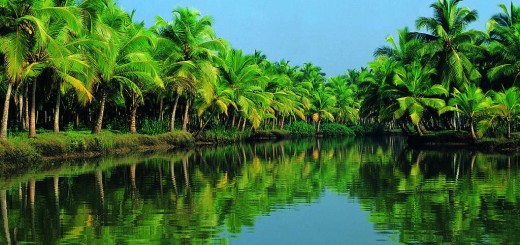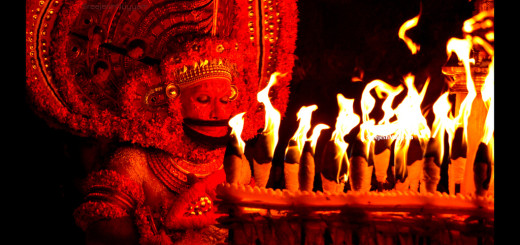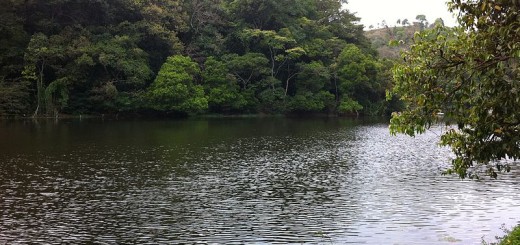Theyyam: The most colorful visual art form of Kerala
Theyyam is a ritual art form peculiar to the northern parts of Kerala. It enjoys tremendous popularity in Kannur, Kasargod, and parts of Wayanad and Kozhikode districts. Theyyam is different from other visual arts in many ways. Its customs, rituals and traditions are all unique.

Kathivanur Veeran – the performer has to be an expert in Kalaripayattu to perform this Theyyam.
A theyyam (the person who performs this art form) is considered as the living embodiment of God. People seek his blessings. Theyyam is an ancient art form. Scholars believe that it possesses several traits that could have originated in the Neolithic period. Theyyam is different from other temple dance forms in very many aspects. Here the performer becomes the God.

Gulikan Theyyam- Gulikan is believed to be an important warrior of Lord Shiva. The Gulikan Theyyam is an integral part of Kaliyattam.
A Theyyam performance is known as Kaliyattam. It incorporates dance, music and mime. Theyyam has its roots in ancient tribal cultures. The worship of heroes and the spirits of ancestors was predominant among the tribal communities of South India. Theyyam borrows heavily from this tradition although such practices are becoming less and less popular today. Over 400 Theyyams are performed today. Some of these are more famous than the others. The most spectacular ones are those of Raktha Chamundi, Muchilottu Bhagavathi, Kari Chamundi, Wayanadu Kulaven, Pottan and Gulikan.
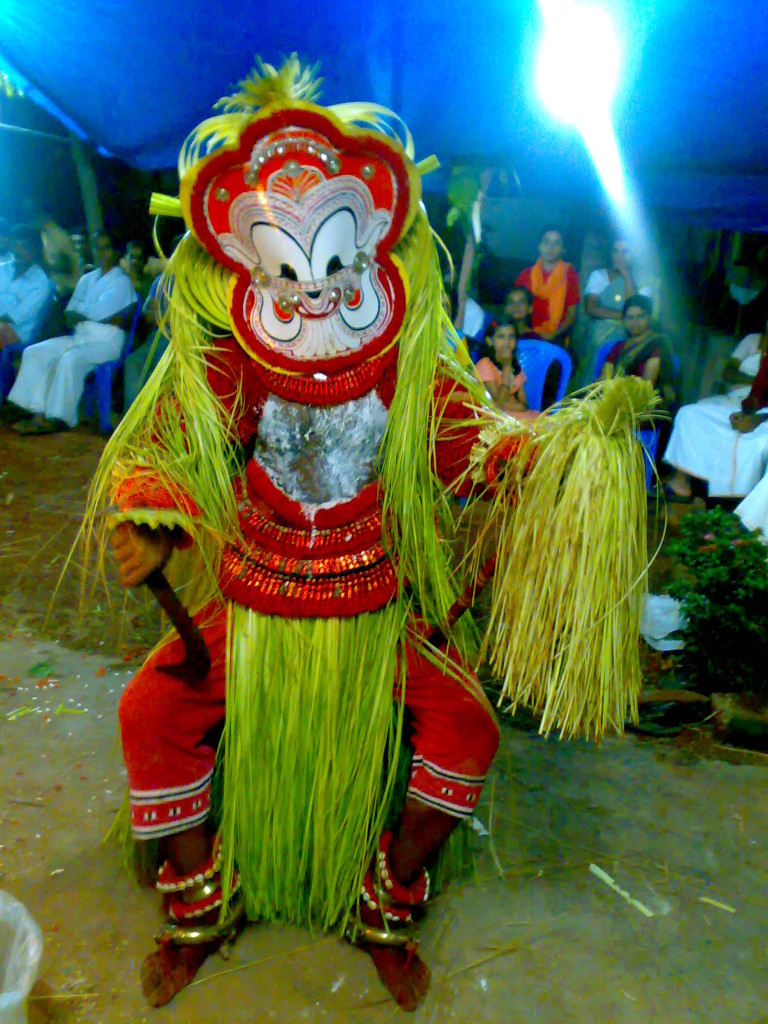
Pottan Theyyam – Pottan is a symbol of goodness that destroys evil.
Theyyam means Daivam. The word daivam means god in Malayalam. That means a Theyyam is a god. These gods aren’t the typical Aryan gods you have heard of. They are mainly heroes who died for great causes or spirits of ancestors. Ancestor worship and hero worship were a common practice among primitive communities.
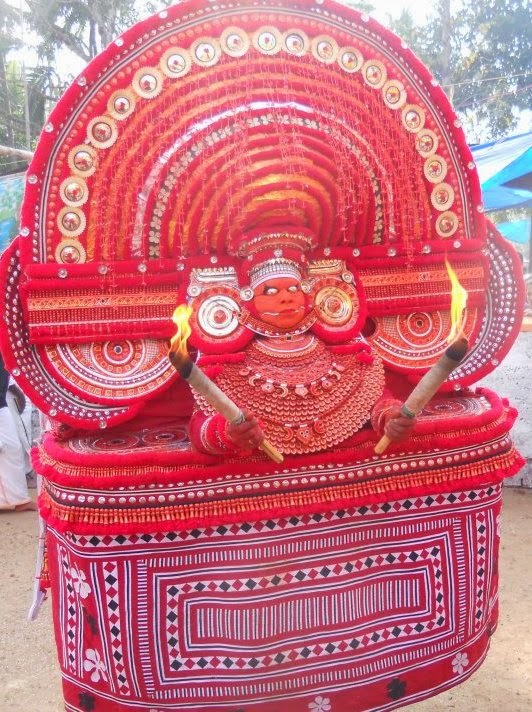
Muchilottu Bhagavathi Theyyam: Muchilottu Bhagavathi is one of the most important Bhagavathi Theyyams.
The performers are Dalit Hindus belonging to the Vannan or Malayan communities. Theyyam is performed in front of shrines. There are no stages or curtains. Before the performance begins there are some introductory rituals called ‘Thudangal’ (the beginning) and ‘Thottam’.
Theyyam is unique to the northern parts of Kerala. It is not performed in other parts of the state.
Southern parts of Kerala have their temple festivals called arattu or utsavam. In Palakkad and Thrissur districts, the temple festivals are called pooram. All of these are very different from Theyyam. A Theyyam performer wears gigantic and colorful headgear and costumes. Theyyam performances are typically held between October and May. At the Parassinikadavu Sri Muthappan Temple in Kannur, a Theyyam performance is held on all days.
Theyyam has every right to be known as a folk religion. It encompasses ancestor worship, spirit worship, tree worship, hero worship, animal worship, Mother Goddess worship and village deity worship to name a few. Such worships are common in mainstream Hinduism as well; however, Theyyam follows some unique rituals. In addition to these Gods and Goddesses, numerous folk heroes and heroines are also worshipped.
The folk traditions and customs of Theyyam have been greatly influenced by mainstream Hinduism such as Shaktism (the worship of Shakti or Durga), Vaishnavism (the worship of Vishnu, the sustainer of the universe) and Shaivism (the worship of Shiva, the destroyer of the universe). Goddesses are usually worshiped in the form of Bhagavathy (The Mother-Goddess who is the united form of the three principal Hindu Goddesses – Lakshmi, Saraswati and Durga/Parvati). That said, the rituals and forms of propitiation used in Theyyam are continuation of the ancient tribal traditions and practices. Blood offering is still practiced in some cult-centers where Theyyam is performed. This is forbidden in Hinduism, Buddhism and Jainism. Such Theyyams cannot perform inside the temples. In this case, a place outside the shrine is selected for the blood offering. The Theyyam deities that are propitiated through the sacrifice of cocks will not enter temples.
Even when Vaishnavism swept across most parts of India, its impact in Kerala was minimal. Because of this reason, there aren’t many Theyyams glorifying Vaishnava gods. The two major Theyyams of Vaishnavism are Daivathar and Vishnumoorthi. Most other Theyyam deities are associated with Shaktism or Shaivism. Even spirits, animals, heroes and ancestors are included in this category.
Theyyam is an excellent example of the evolution of Hinduism. Before the Aryans came with their sophisticated version of Hinduism, India had its own tribal religions, traditions and practices. Theyyam originated from such practices. This art form is still performed by Dalits. However, like other tribal religions, it eventually lost out to mainstream Hinduism. Theyyam practiced today has been greatly influenced by Hinduism, but the rituals are very ancient.
Patronage
Mainstream Hinduism has always been the religion of Brahmins and Kshatriyas. Within the Hindu community, there have always been castes that objected to the supremacy of Brahmins in matters of religion and temples. The Thiyyar community, for example, didn’t subscribe to the notion that only Brahmins could perform puja in temples. They patronized Theyyam as their own form of religion and worship. It was common for every Thiyyar Tharavadu (large ancestral homes) to have their own Theyyams.
Theyyams have always remained beyond the domain of the upper castes. Only those belonging to tribal communities can perform as Theyyams. Despite this, out of devotion, Brahmins and Kshatriyas established their own temples for Theyyam deities. While pujas in these temples are still performed by Brahmins, Theyyams perform there during the annual festivals.
Performance
The Theyyam performances take place in front of a village shrine. Sometimes it is performed in houses with elaborate rites and rituals. Such performances are part of ancestor worship.
There is no stage or curtain. The Theyyam will perform right in front of the devotees who may be standing or sitting. A performance may continue for 12 to 24 hours. There are intervals in between.
During the performance, the chief dancer who propitiates the deity will remain inside the premises of the shrine. After sunset, this dancer will not eat anything. Theyyam performance requires elaborate make-up. The make-up of the chief dancer is done by specialists. The first part of the Theyyam performance is known as Thottam or Vellattam. Thottam is performed without any decorative costumes or elaborate make-up. The performer will just wear a small, red headdress. The dancer and the drummers will recite a ritual song which describes the myths and legends associated with the folk deity or temple deity to be propitiated. Folk musical instruments are played during this ritual. After finishing this part of the invocation, the dancer will return to the green room. He will appear again after a short interval wearing elaborate makeup and costumes.
The face-painting used is unique to each Theyyam. Primary and secondary colors that contrast with one another are used to create a stylistic effect. When the make-up is complete, the dancer will appear in front of the temple and the real performance will begin. During this performance, he will gradually metamorphose into the deity. He will observe certain rituals and then place the headgear on his head. Folk musical instruments are played in the background. All the dancers will take their shields and swords. Afterwards, the main dancer will circumambulate the shrine, run in the courtyard and dance there. A Theyyam performance involves the playing of musical instruments, dance, vocal recitations, elaborate costumes and make-up. The ritualistic traditions and stage-practices make Theyyam one of the most fascinating performing arts of India.
